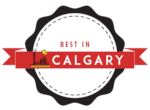Language and Culture in Board Development
Two weeks after the final presentations in Calgary that set us off on the path to be “real” Board Development Instructors, I was assigned my first workshop to co-facilitate. I was a little unsure of what to expect for the first one, and this one had another couple of twists to add to the challenge. The group I was going to meet had just been created in the last year, so was still very grassroots, their culture was different from mine, and English was not the first language of any of the participants.
I wanted to be as respectful as possible, and provide the best experience possible while providing them with all the information they were going to need to for their organization to succeed. The first thing I did was research their culture to try to learn about the language, thinking I could incorporate some of it into my presentation, even if it was just a “welcome” slide. I discovered that there was more than one language to choose from, so without knowing which one would be appropriate, I decided not to go that route. English, it was!
I was out at a meeting the morning prior to my presentation, wearing a pretty snappy professional dress, when I realized that this might not be appropriate for this group either. I did some quick research and found that there were quite a number of traditional cultural rules around the way a woman was to dress in public so I went home and changed. I added a pair of loose slacks under my dress, and a long jacket over top of that. Dressed much more modestly upon my arrival, it was obvious that this more closely resembled the dressing style of the women attending the workshop.
So far, so good. Until the stumbling and stuttering on my part… trying to think and speak in simple English while presenting the information in the introduction… how was I going to manage the more complicated information to come later? The people were shy, and even though a couple of the men, and one of the women, spoke good English, they were somewhat embarrassed at the barrier. We played it up as a safe place to practice their English and hoped for the best.
With limited questions from the group, and the simplified presentation, we were done very early on the Friday night. How was this going to work? Luckily, the group had ordered food to arrive at the time we had intended to end, and my co-instructor and I were happy to stay to receive their hospitality. With an hour to wait before the food arrived, we had a great opportunity to listen, visit, ask and answer questions, and learn about each other in the less formal environment of the kitchenette.
What we did notice through the presentation and the visit was that everyone was much less shy in their own language. We hoped to capitalize on that for the remainder of the workshop. Because simplifying the information was not what they really needed, we decided to build in long pauses (about 5 minutes) after each salient point on Saturday to check in with the group to see if they needed to summarize for themselves in their own language or to ensure that everyone had understood the presented information. While we encouraged participants to reinforce and practice their English language skills, they were also afforded the comfort to share their experience and expertise with their peers with less effort. Soon the group was involved in animated conversation and questioning that they would bring back to an English question, comment, or summary for our benefit. By the end of the workshop, I felt that some of the shiest, including the women, had become comfortable enough to participate in portions of the discussion in English and even asked some questions in English!
I think that by being sensitive to the cultural issues such as etiquette, protocol, communication styles, and language and translation we were able to relate to the participants more easily, leading to more successful instruction and more fulfilled students. I hope this group enjoyed the workshop as much as we did. I learned a lot. We, as co-instructors, hope we were able to provide them with the tools to build upon the experiences and expertise they bring from their own country to create a successful not-for-profit organization in Calgary from which they can support their community and fulfill their vision.

